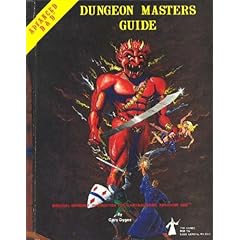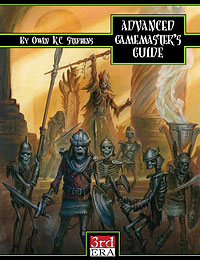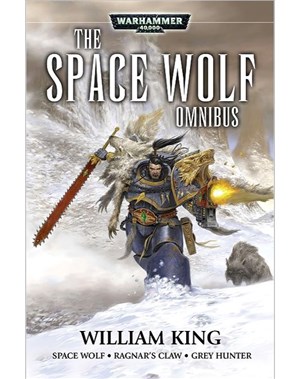
I'm getting back into the DM's seat for Dungeons & Dragons after almost a year hiatus. (I've spent my time playing D&D, and running Runequest and other games over the past many months, and will continue to do so. Halloween Cthulhu is just around the corner!) I'll be running 4th Edition D&D at my friends' comic book shop for regularly scheduled games, with Forgotten Realms as the campaign setting (the setting I've been running in pretty regularly for about 20 years, with the occasional side trek to Ravenloft, Greyhawk or Eberron).
In prep for the games, I've been scouring my years and years worth of Forgotten Realms supplements for adventure hooks, encounter sites, plots and NPCs. In my humble opinion, the Realms run best as a sandbox, rather than something where the players are led by the nose into a large metaplot. (I'm still trying to understand how TSR thought having the Horde or the Times of Troubles as playable encounters in the 90s was a wise idea... Unless the PCs are driving the action, having them suckered into large campaigns as bystanders - soldiers in the army, instead of instigators - can make for a difficult scenario to DM...) So, to create the best Realms sandbox that I can, I've been leaning on a lot of the campaign resources, but also on decades' worth of Dungeon Master's Guides. It's kind of wild to see how this product has evolved over the years.
- The First Edition DM's Guide, of which I do not have the fancy one pictured above, but instead the yellow spined edition that had some revisions to it, was a stream of consciousness walk through gaming philosophy, tables of random items and dungeons, and much much more. Not a practical guide by any stretch (not even its champions, myself included, would claim that) it was instead basically a brain dump by Gary Gygax of how gaming ideally works. Much fun is the random dungeon generator for solo play, as well as the artifcats that are still finding themselves used in games today.
- The Second Edition DM's Guide was the weakest of the bunch. Neutering D&D to make it "adventure without danger" in reaction to a lot of the pressures of the 80s about the evils of roleplaying games (I'm using fairly broad strokes here - there were a lot of other factors to the revision), 2nd Edition started the trend of making the DMs guide slimmer than the Player's Handbook. Put the rules in the PHB, put the philosophy and commentary in the DMG. But, sadly, there was little of that in the 2nd edition guide, focusing more on magic items, etc.
- The 3.5E DM's Guide (I don't have the 3e one), took a step back to offering more in the way of guidance, including a chart of 100 plot hooks that I still use, lots of advice about running games and creating adventures, as well as tons of info about how to DM. I think it may be the best of the WotC/TSR DM's guides.
- The 3.5E Dungeon Master's Guide II, which I couldn't lay my hands on in the past few days - must be in a box somewhere, was a fantastic resource. Taking the 1E village of Saltmarsh and expanding it, building plot hooks for months of adventures, and statting out so much of it was tremendous. Perhaps even better was the advice on how to make a world living and breathing, including how to build out official factions. Now was this likely in reaction to what was happening in the video game world with factions as a way to relate to a game world? (See Oblivion, WoW, etc.) Likely yes, but the way to enact it for a tabletop RPG as well done, and made it something I started trying to do more and more of with the Ptolus campaign I was running when I purchased this book.
 Not an official TSR/WotC product, but noteworthy nonetheless was Green Ronin's Advanced Gamesmaster's Guide. (Full disclosure - I playtested this for Green Ronin, and felt right from the start that it was going to be a fantastic product.) There was more keen advice in here than in any other product I'd seen to that point about how to be a good DM. Not just the stuff about "here's how to prep a published adventure," but stuff about roles in the playing group and how to address particular needs that different player types might have, how to craft scenarios to different play styles, and lots of great ideas for NPC behavior, plot hooks, and more. Great, great stuff.
Not an official TSR/WotC product, but noteworthy nonetheless was Green Ronin's Advanced Gamesmaster's Guide. (Full disclosure - I playtested this for Green Ronin, and felt right from the start that it was going to be a fantastic product.) There was more keen advice in here than in any other product I'd seen to that point about how to be a good DM. Not just the stuff about "here's how to prep a published adventure," but stuff about roles in the playing group and how to address particular needs that different player types might have, how to craft scenarios to different play styles, and lots of great ideas for NPC behavior, plot hooks, and more. Great, great stuff.- Lastly, the 4th Edition DM's Guide. Now, I've been kind of hard on 4e. I still feel like the overall focus of making a game that is more relevant to the World of Warcraft gang (of which I'm happy to be an on-again-off-again member) takes away from the fun of "play" that previous editions had. ("Do you want to be a wizard or a fighter?" has been replaced with "Do you want to be a controller or the tank?" as I've stated before.) That said, the DM's guide does a good job in going over the mechanics of being a good DM - how to build good encounters, how to build quests, etc. I feel the overall system itself is too focused on the mechanics of 10 encounters are needed to level, and here's what should be in those encounters, and that sort of metagaming, but the result is what you make of it. I'm going to work hard to make a 4E sandbox where it's about the characters, not the stats and artillery roles. The way the book closes, with the introduction of the town of Fallcrest as an adventure starting point, does a good job to show what the game can be, and I hope more and more DMs embrace that.

No comments:
Post a Comment